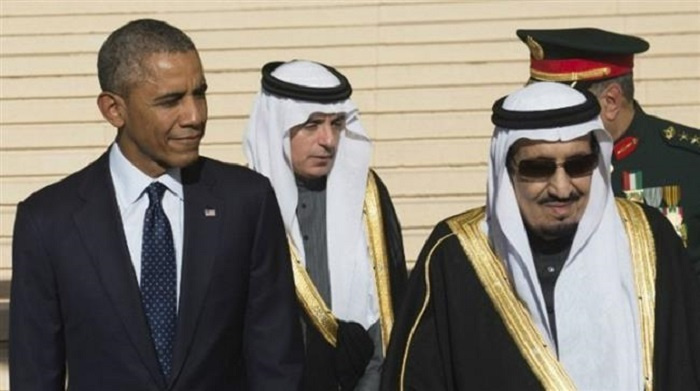After the Nuclear Deal, New Regional Arms Race

Ordinarily, a final nuclear deal between Iran and the world powers should be viewed as a timely blessing and breakthrough for regional peace and tranquility, by virtue of removing the tensions over Iran's nuclear program and thus presenting a new opportunity for regional cooperation, particularly in Persian Gulf region. Yet, while this remains a distinct possibility, unfortunately it co-exists with another, less sanguine, possibility that in the aftermath of a nuclear deal the region will witness a heightened arms race with debilitating consequences for regional stability.
This more ominous development stems from the overt signs that the U.S., France, and other Western powers intend to boost their respective military-industrial complexes through hefty, multi-billion dollar new arms sales to Saudi Arabia and other Persian Gulf emirates of the Gulf Cooperation Council (GCC) under the pretext of "allaying" the latter's concerns about Iran's power after the deal. In fact, there are unconfirmed reports in the world media that the Camp David summit with the Arab leaders is intended as the occasion to expand U.S. arms sales to the region, irrespective of the 'snub' given by some Arab rulers.
Coinciding with a five day truce on Yemen, which has been turned into a GCC arms clearing house, albeit at the expense of thousands of civilian victims, the Camp David meeting is ostensibly geared to reassure America's Arab allies of sustained U.S. support, but it will likely showcase President Obama as a shrewd arms salesman using the Iran threat to funnel more expensive arms to the rich Arab nations, following the footsteps of France's President, Francois Hollande.
In his recent tour of the region, Hollande managed to secure multi-billion dollar arms sales to Saudi Arabia and Qatar, as a reward for France's hard-line politics vis-à-vis Iran and its willingness to even fathom direct proxy role in the Saudi-led carnage in Yemen. According to reports, France has signed a $7 billion dollar deal to sell 24 Rafale fighter jets to Qatar, a similar deal with UAE might be in the works, and has also inked agreements with Saudi Arabia for 20 military and non-military projects worth "several billion euros." This is on top of last year's French sale of fighter jets, air-to-air missiles, frigates, and cruise missiles to Egypt worth nearly $6 billion dollars.
Not to be outdone by France, the U.S. is now determined to boost its arms sales to the GCC states, who spent more than $100 billion dollars on weapons in 2014. Last year, Saudi Arabia was the fourth highest military spender in the world, after U.S., China, and Russia, and its military spending was up by 17 percent. Other GCC states have followed the same pattern of sharp increases in their military spending. Qatar for example announced new weapons purchases worth $23.9 billion in 2014.
Clearly, given the huge military contracts that are nowadays rationalized under the rubric of "beefing up security" to deter Iran's "threat," the Western powers are not genuinely interested in any Iran-Saudi thaw and or the emergence of a collective security arrangement that would ensure the oil-rich region's stability. Rather, a managed inter-regional rivalry is conducive to those arms contracts that, in turn, create thousands of jobs and help the economies of arms-exporting nations, as readily admitted by France's defense minister recently.
But, the downside of a post-nuclear deal arms bonanza for Western military contractors, fully rationalized by certain think tanks in the West, is that it fuels a new asymmetrical arms race in the region that breeds instability and tension, in light of the fact that the GCC states outspend Iran in terms of military expenditure by a huge margin (i.e., 12 to 1 or even more depending on the hitherto undisclosed 2015 numbers). A more conservative estimate has appeared in the journal Foreign Policy worth quoting at length:
"In 2014, U.S. allies in the GCC outspent the Iranians by a margin of more than seven-to-one, investing over $113.7 billion in their militaries compared to Iran’s $15.7 billion. The United States has long given its Gulf allies some of its most advanced military equipment, such as the F-15 and F-16 fighter jets that it sold to Saudi Arabia and the UAE. Riyadh alone spent more than $80 billion on defense in 2014. And Saudi air defenses — bolstered by advanced F-15 fighters, top-of-the-line intelligence, surveillance, and reconnaissance (ISR), and missile defense capabilities — are more than capable of defending the kingdom from Iran’s conventional military attacks."
Needless to say, from the prism of Iran's national security, these are unsettling developments that raise serious national security concerns for the country. After all, the purpose of multilateral nuclear negotiations has never been to act as the spigot for destabilizing arms flow to Iran's vicinity. This is tantamount to Western powers' exploitation of the nuclear issue for their own benefits thinly-disguised as legitimate moves to "contain Iran." The ruse of containment has, however, certain debilitating consequences for regional stability by virtue of fueling a new stage in regional arms race and heightening Iran's security concerns.
Henceforth, it is incumbent on the U.S. and other Western powers to reassure Iran that they are not following the sinister script of manipulating the nuclear deal for the sake of massive new arms infusions in the region, which would belie their pretensions of concerns about regional stability, otherwise their relentless desire to quench the thirst of their military contractors for more and more weapons contracts with Iran's Arab neighbors will inevitably harm not only the cause of regional stability but also détente with Iran.

